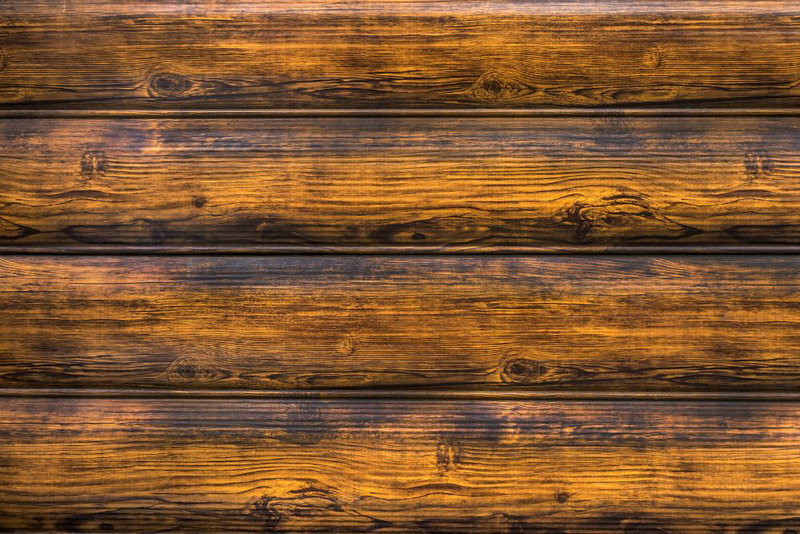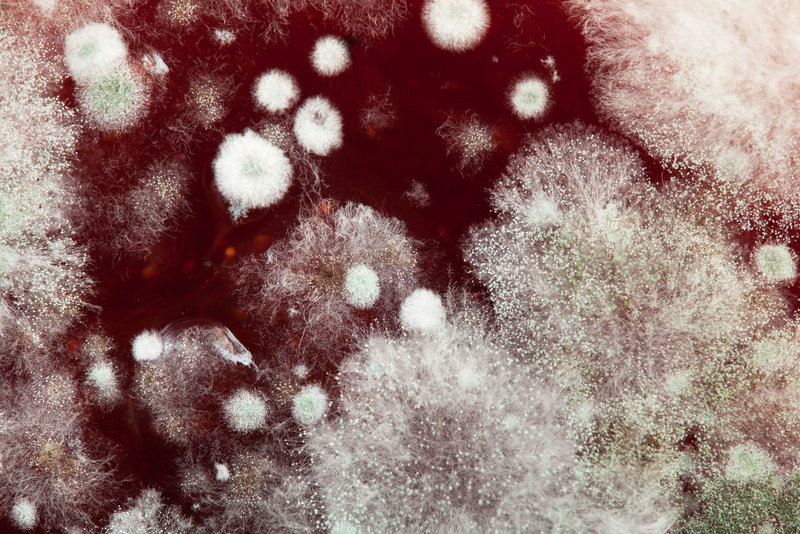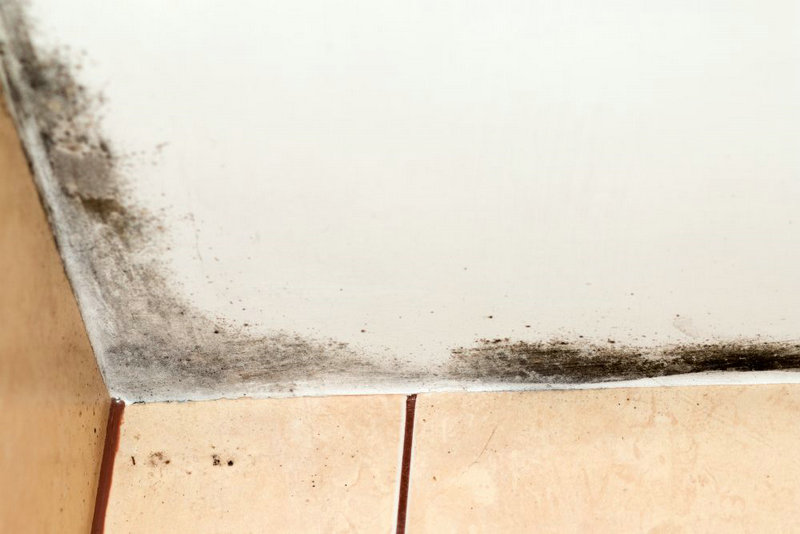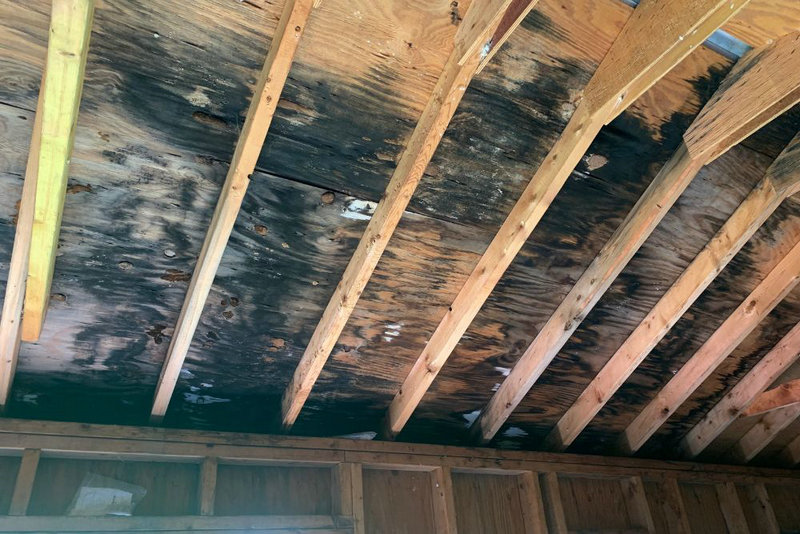
As a homeowner, discovering mold on your cherished wooden furniture can be disheartening. Not only is mold unsightly, but it can also pose health risks and cause damage to your belongings if left unchecked.
Mold thrives in damp, humid environments and wooden surfaces provide an ideal breeding ground due to their porous nature. Understanding what causes mold growth on wood and how to effectively prevent and remove it is crucial for maintaining the beauty and integrity of your furniture.
In this article, we’ll delve into the world of mold and equip you with the knowledge and tools needed to keep your wooden furniture mold-free.
Why Cause Mold Come to the Wooden Furniture
Well, mold spores are always in the air and scouting for places to land and grow. On average, there are millions of spores in your home, but most of the time, the environmental conditions are not good enough for them to live, so they just become dust.
However, damp conditions (high humidity levels above 55%) with poor airflow give them a chance. Wood can absorb moisture from the surrounding air or direct water exposure and the spores will not be taken away by the air mobility. So, the dampness in your wooden furniture offers organic material for them to grow on.
Wooden furniture near exterior walls or in damp areas in your home, like the basement, is typically more prone to mold. This is because these places are easy for condensation to form, which provides an area conducive for mold to grow.
Identify Different Types of Mold

To learn the different types can help you identify what you are suffering from and how to kill mold on furniture. Here is the list for you to quickly understand their appearance and where they will grow.
- Aspergillus – Very common, found in soil, grains, decaying vegetation, and damp areas like crawl spaces and walls. Can cause mild allergic reactions in most people but more serious lung issues in those with weakened immune systems.
- Alternaria – Prevalent allergenic mold, often dark in color. Grows in damp areas like bathrooms, windows, and under sinks. A common trigger for asthma and hay fever.
- Cladosporium – Olive-green or brown in color with a suede-like texture. Grows in both cold and warm damp locations like window sills, appliances, and carpets. Can cause mild allergic reactions.
- Penicillium – Blue, green, or yellow in color. Grows on insulation, carpets, and water-damaged furniture. Spreads quickly and can cause allergic reactions and lung inflammation.
- Stachybotrys (Black Mold) – There are many types of black mold, and Stachybotrys is the most serious one. Dark green or black slimy mold that grows on cellulose materials like drywall and wood. It releases toxic mycotoxins, which can cause respiratory problems and also skin irritation. Produces mycotoxins and should be professionally removed.
- Acremonium – Starts pink or gray but turns powdery. Found in areas with water damage. Should be treated immediately as it can cause serious health issues at high concentrations.
- Aureobasidium – Pink, brown, or black mold that grows on painted walls, wallpaper, wood, and caulk in damp areas. It can cause skin, eye, and nail infections.
- White Mold- White mold refers to several species of mold that can appear white, including Aspergillus, Cladosporium, and Penicillium. This kind of mold doesn’t cause health problems, but when it appears, you should know that there is a problem with a higher moisture level in your room.
We can see that the Stachybotrys and Aurebasidum are the two types of mold that commonly appear on wooden furniture. To get rid of them, you should know some specific tools and follow a methodical process to ensure effective mold removal and avoid damaging the surface.
Health Implications of Mold in the Home
When mold appears on your wooden furniture, it’s not just an aesthetic concern but a health one too. Here’s what you need to know about the health implications that mold in your home can bring.
Allergic Reactions and Respiratory Issues
Exposure to mold, especially for prolonged periods, may lead to allergic reactions and respiratory issues. If you have a mold allergy, typical signs include:
- Sneezing
- Runny nose
- Red eyes
- Watery eyes
- An itchy throat
For those with asthma, mold can be a significant trigger, potentially leading to asthma attacks. It’s vital to monitor the air quality in your home and to address any mold problems promptly to maintain good respiratory health.
Skin Irritation and Other Health Risks
In addition to respiratory problems, coming into contact with mold can cause skin irritation. Symptoms of a mold-induced skin reaction may involve:
- Redness
- Itching
- Rash (dermatitis)
Mold exposure doesn’t just potentially affect your skin and breathing; it can pose other health risks. These can be more severe if you have a compromised immune system or chronic lung issues. In such cases, mold can cause infections in your lungs. It’s crucial for your health to keep the humidity levels in your home in check and to clean any visible mold growth immediately.
How to Clean Mold from Wooden Furniture

Preparing Your Cleaning Area and Safety Gear
Before tackling mold, it’s crucial to prepare your work area. Move the furniture to a well-ventilated space or outdoor area if possible. Seal off the work area with plastic sheets to prevent spores from spreading to other parts of your home. Safety is paramount when dealing with mold. Wear PPE that includes a respirator or face mask, safety goggles, and rubber gloves to protect your eyes, lungs, and skin from irritants.
Choosing the Right Mold Removal Products
Selecting the proper cleaning solution is key to effectively remove mold from wood. Some products can remove the mold from the wood furniture directly; some will form a protective barrier.
Here are some detergents for you to kill the mold:
- Hydrogen peroxide:
Hydrogen peroxide is an effective, non-toxic alternative to bleach for killing mold on hard, non-porous surfaces like wood. The 3% concentration found in stores is sufficient. Here’s how to use it:
- Pour 3% hydrogen peroxide into a spray bottle. Do not dilute it.
- Spray the moldy surface thoroughly to saturate it. Let it sit for 10-15 minutes until it stops fizzing and bubbling.
- Scrub the area with a stiff brush or scouring pad to remove the mold and mold stains. For stubborn stains, make a paste with baking soda and hydrogen peroxide and scrub.
- Wipe the surface clean with a rag to remove residual mold and spores.
- Repeat as needed until all mold is removed. Allow the surface to dry completely.
- White vinegar:
Distilled white vinegar is another effective, natural, and non-toxic way to kill about 82% of mold species due to its mild acidity. To use:
- Pour undiluted white distilled vinegar (5% acidity) or cleaning vinegar (6% acidity) into a spray bottle. Do not dilute with water.
- Liberally spray the vinegar directly onto the moldy surface until it is saturated.
- Let the vinegar sit on the mold for at least 1 hour. This allows it time to penetrate and break down the mold.
- After an hour, use a stiff brush or scouring pad and hot water to scrub the mold off the surface.
- Wipe the surface clean with water to remove residual mold and spores. Allow the surface to dry completely.
- For stubborn mold stains, make a paste of baking soda and water. Apply, let sit, then scrub off. Spray with vinegar again and let dry.
- Vodka:
Vodka also can be used when cleaning the mold:
- Pour undiluted vodka (preferably a cheap, bottom-shelf variety) into a spray bottle. The high alcohol content and congeners in lower-quality vodka make it effective at killing mold.
- Spray the moldy area liberally with the vodka, saturating the surface.
- Let the vodka sit on the mold for 10-30 minutes. This allows it to penetrate and break down the mold.
- After letting it sit, spray the area again with vodka and scrub the mold with a stiff brush or sponge to agitate the surface and remove the mold.
- Wipe the area clean with a damp cloth or towel to remove the dead mold and any residual spores.
- For extra cleaning power, you can optionally mix the vodka with equal parts water and add a few drops of essential oils like lavender or lemon.
The Common Cleaning Process
- Pre-Cleaning: Begin by gently vacuuming the surface mold with brushes.
- Application: Apply your chosen cleaning solution using a spray bottle or damp cloth. For bleach or vinegar solutions, let the solution sit for a few minutes to penetrate the mold.
- Scrubbing: Scrub the mold away with a soft brush or cloth. Take care not to saturate the wood to prevent water damage.
- Rinsing: Wipe the area with a clean, damp cloth to remove any residual mold and cleaning solution.
- Drying: Dry the area thoroughly with a clean, dry cloth; lingering moisture can lead to more mold growth.
- Sanding: If the mold has penetrated the surface, gentle sanding may be necessary. Be sure to wear a mask to avoid inhaling spores.
For persistent mold, you may need to repeat this process or look for commercial mold removers designed for wood furniture. Always read and follow the manufacturer’s instructions when using commercial products. After cleaning, keep an eye on the area to ensure that the mold does not return.
Preventive Measures for Mold on Wood Furniture

Preventing mold growth on your wood furniture involves a multi-faceted approach that includes ensuring proper air circulation, maintaining optimal humidity levels, and regular maintenance. By employing the strategies in the following subsections, you can protect your beloved furniture from the damaging effects of mold.
Effective Ventilation Strategies
To prevent mold, it’s essential to maintain good airflow around your furniture. Place your furniture in well-ventilated areas where air can circulate freely. This might mean keeping pieces away from walls or using a setup that doesn’t obstruct air movement. Consider repositioning furniture to improve airflow, especially if it’s currently pressed against exterior, poorly insulated walls which can lead to condensation.
- Open windows to let fresh air cycle through your home regularly, especially in areas like basements and attics that may have poor ventilation.
- Incorporate fans into rooms without adequate natural airflow to keep the air moving.
Optimizing Humidity Levels
Wood furniture thrives in stable environments, and high humidity is a mold’s best friend. Keep your indoor humidity levels between 30% to 50% to dissuade mold growth.
- Make use of dehumidifiers in damp spaces to actively control moisture in the air.
- Monitor humidity levels with hygrometers so adjustments can be made as necessary.
Routine Inspection and Maintenance
Regularly inspect your wooden furniture for any signs of mold. Catching problems early can save you a lot of trouble down the line.
- Clean surfaces with mild cleaners to prevent dust and dirt accumulation, which can also harbor mold spores.
- During cleaning, check for any signs of mold and address them promptly with appropriate mold removal techniques.
In conclusion, mold growth on wooden furniture is a common household problem that can lead to health issues and damage to your cherished belongings if not addressed promptly. By understanding the causes of mold growth, such as excess moisture and poor ventilation, you can take proactive steps to create an environment that is less hospitable to mold. Regular cleaning, controlling humidity levels, ensuring proper air circulation, and using mold-resistant products can go a long way in preventing mold infestations.
If you do discover mold on your wooden furniture, act quickly to clean and remove it using appropriate methods and products based on the type of mold and extent of growth. For severe or recurring mold problems, don’t hesitate to enlist the help of mold remediation professionals. With the right knowledge, tools and a proactive approach, you can effectively combat mold and keep your wooden furniture looking beautiful for years to come. Remember, a mold-free home is a healthier and happier home.
Frequently Asked Questions
Use vinegar on wood furniture will not hurt my furniture?
Using vinegar on wood furniture is generally safe when diluted properly, but it may not be suitable for waxed, oiled, unsealed, or unfinished wood surfaces, as it can break down these finishes. Stick to using it on sealed, finished wood only and when you start to use vinegar, remember to remove loose mold spores first.
How can I detect mold?
To detect mold in your home, start by visually inspecting areas prone to moisture like bathrooms, kitchens, basements, and around windows for visible signs of mold growth, which often appears as dark spots or patches with a fuzzy or slimy texture. Pay attention to any musty, damp, or earthy odors, as mold often produces a distinct smell.
